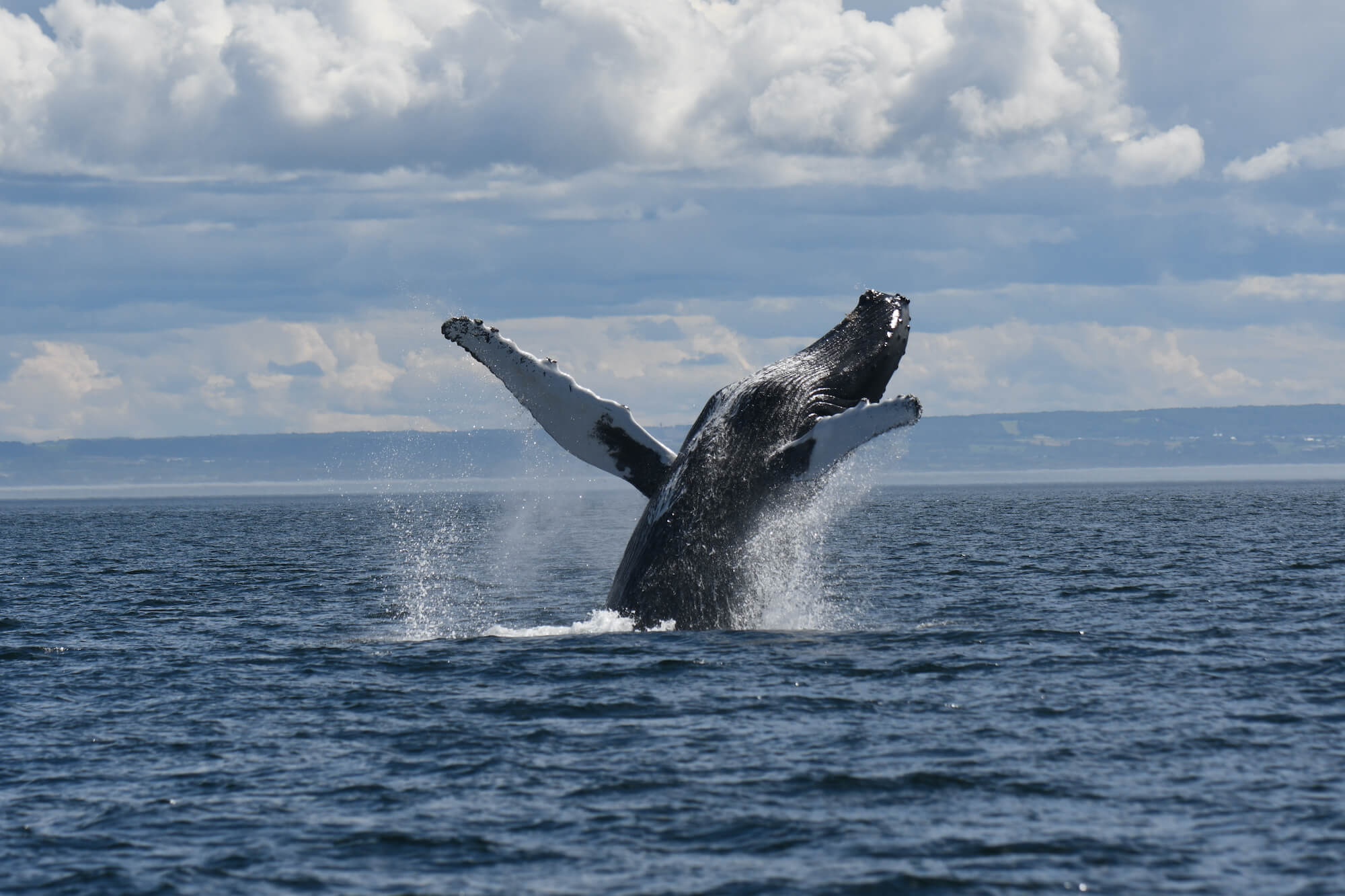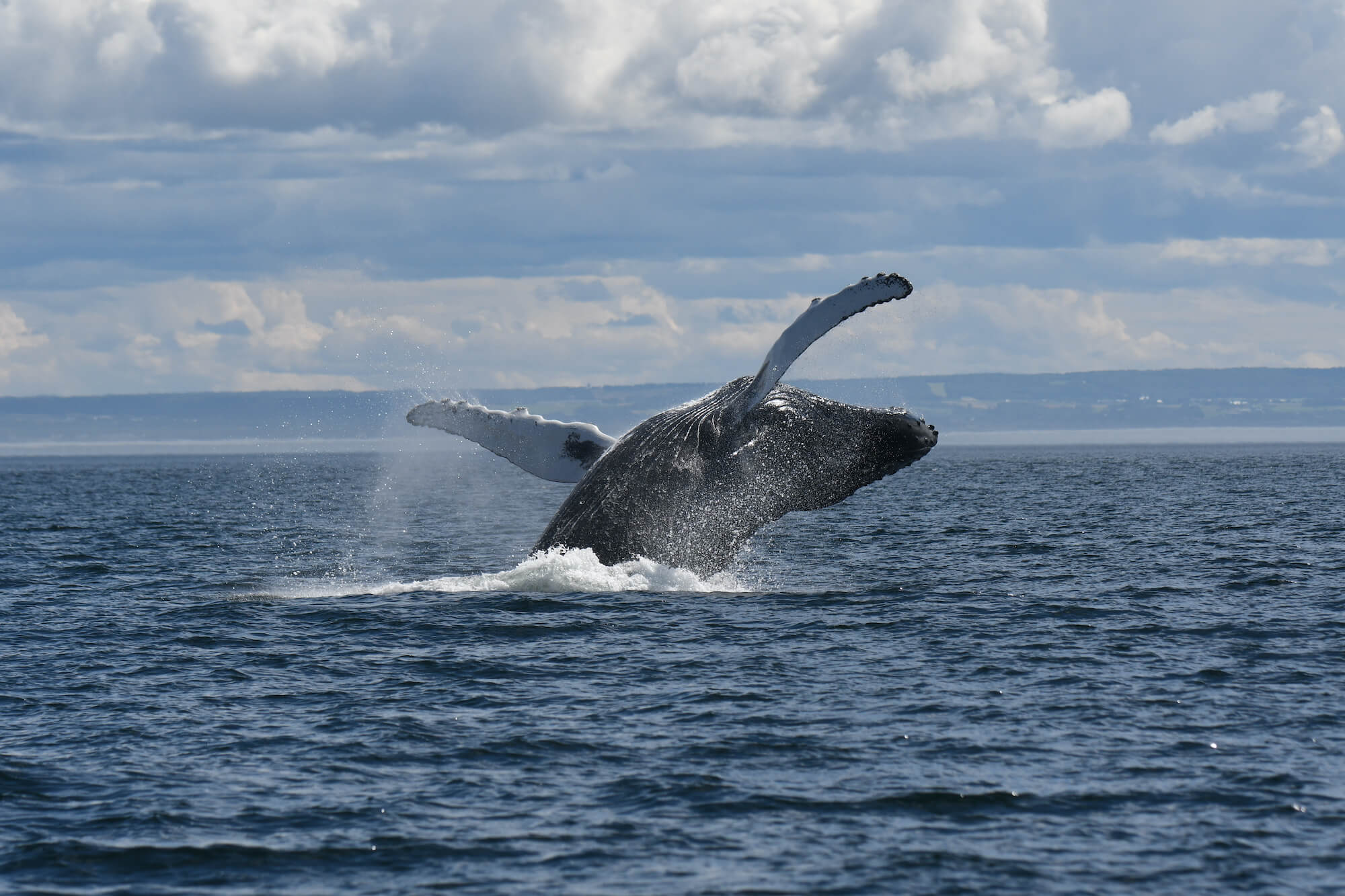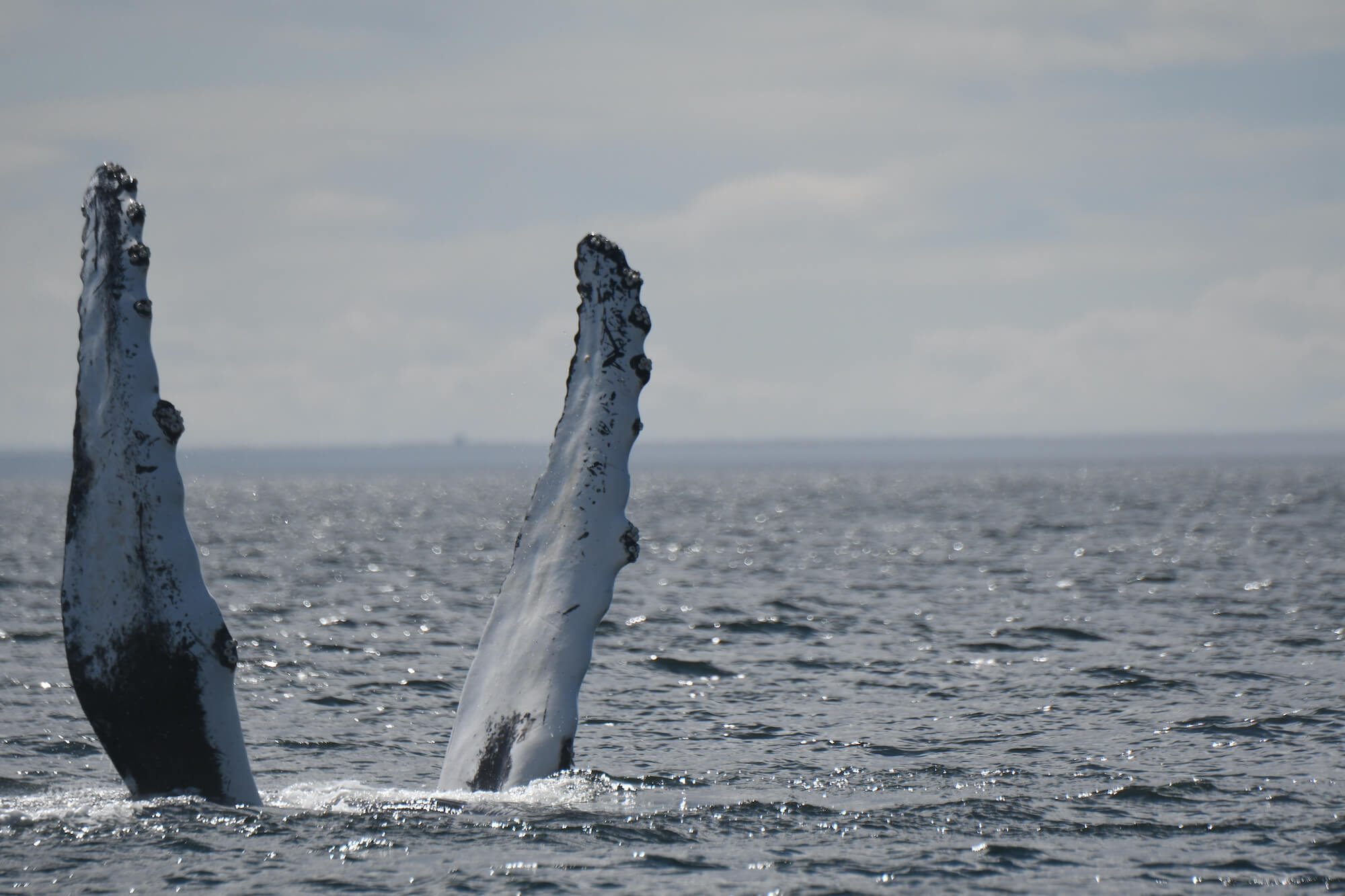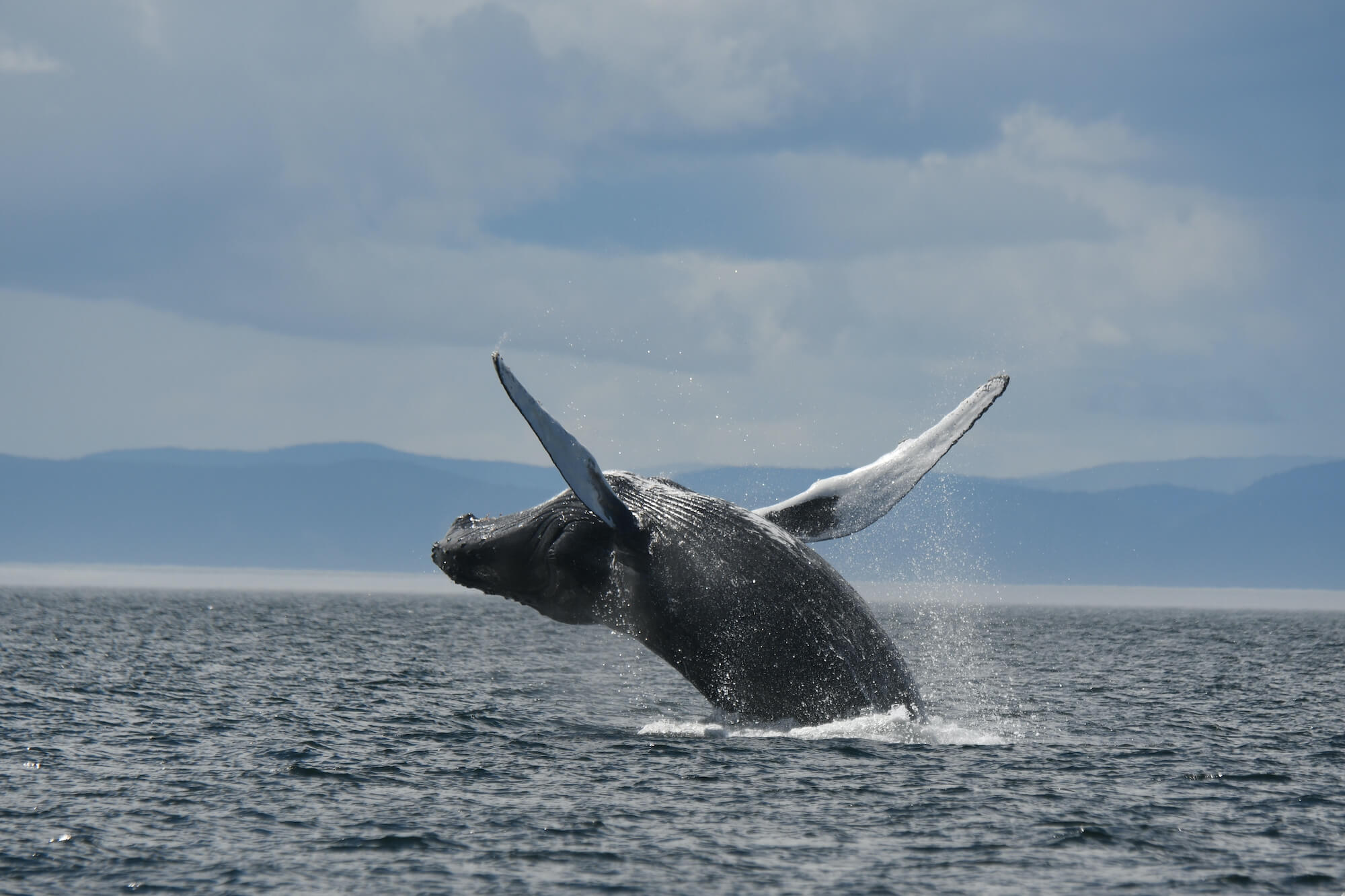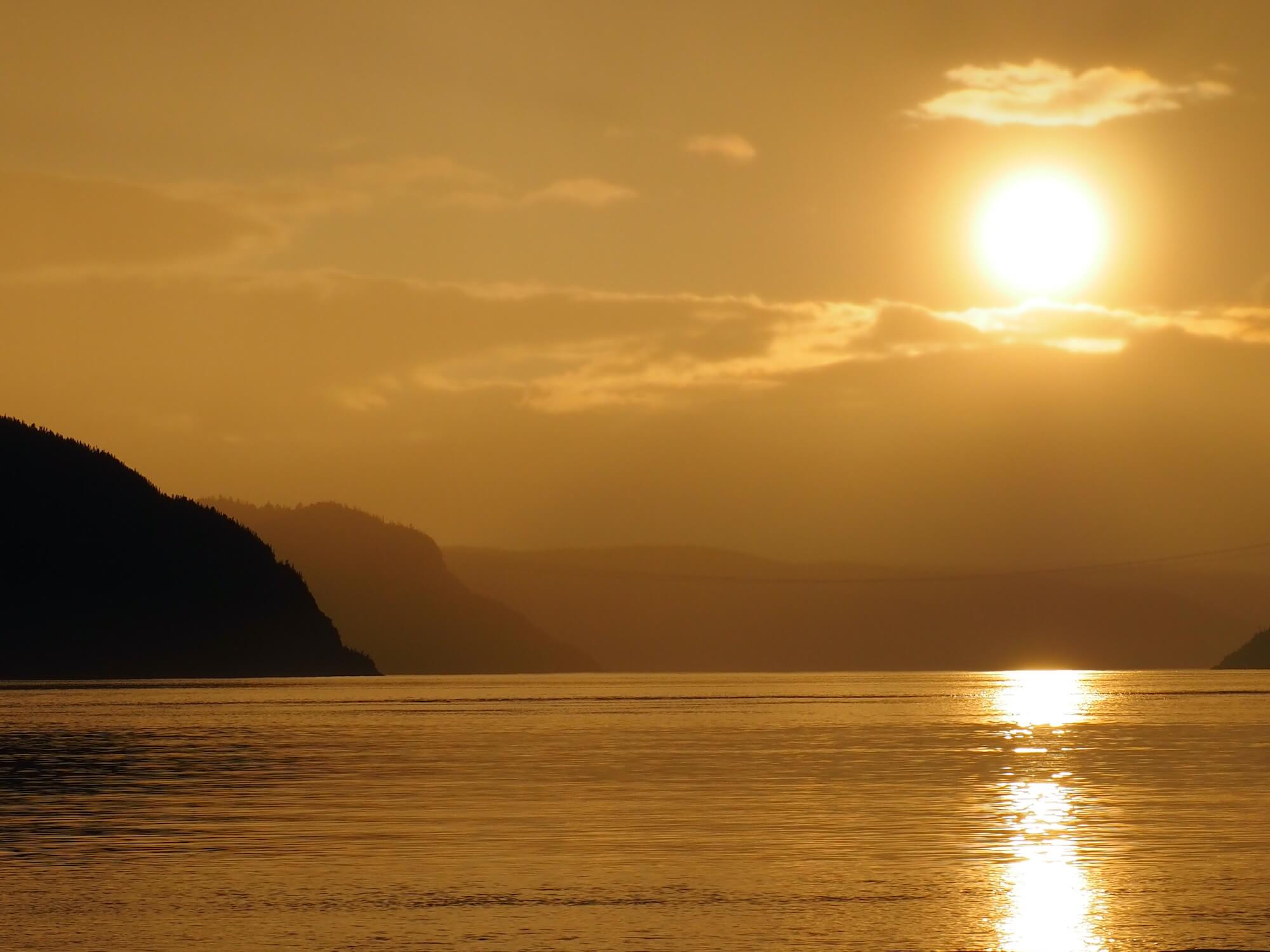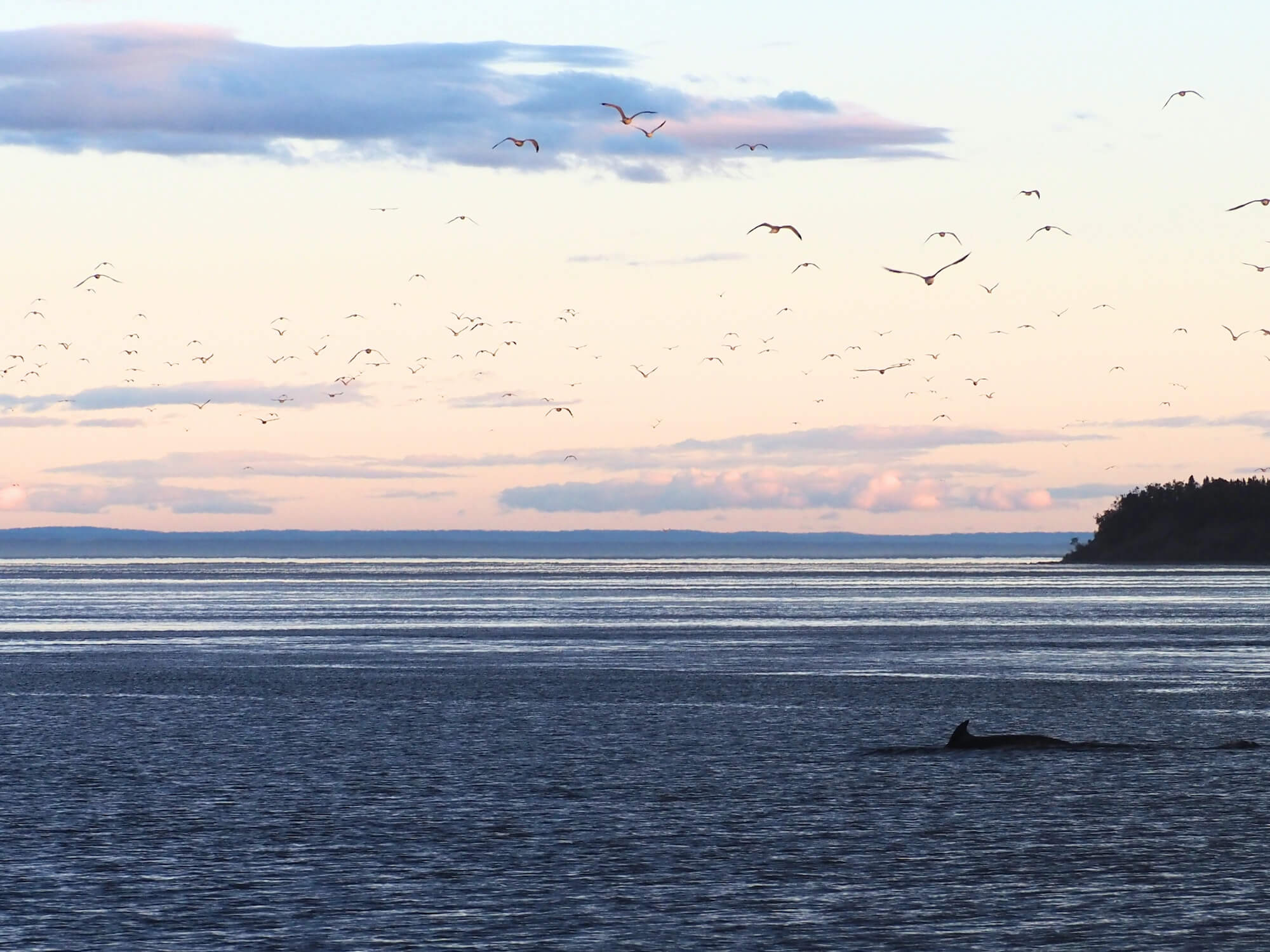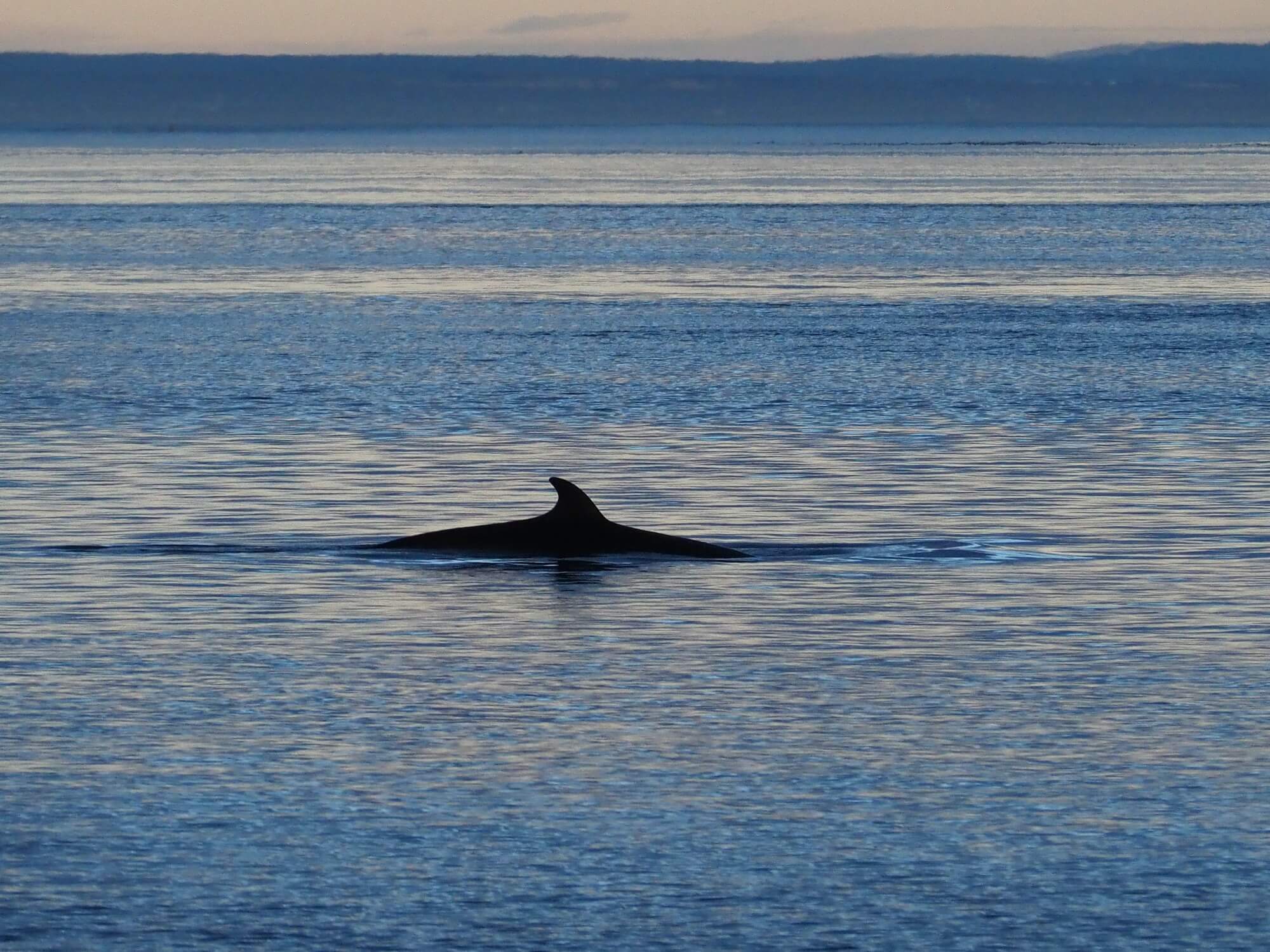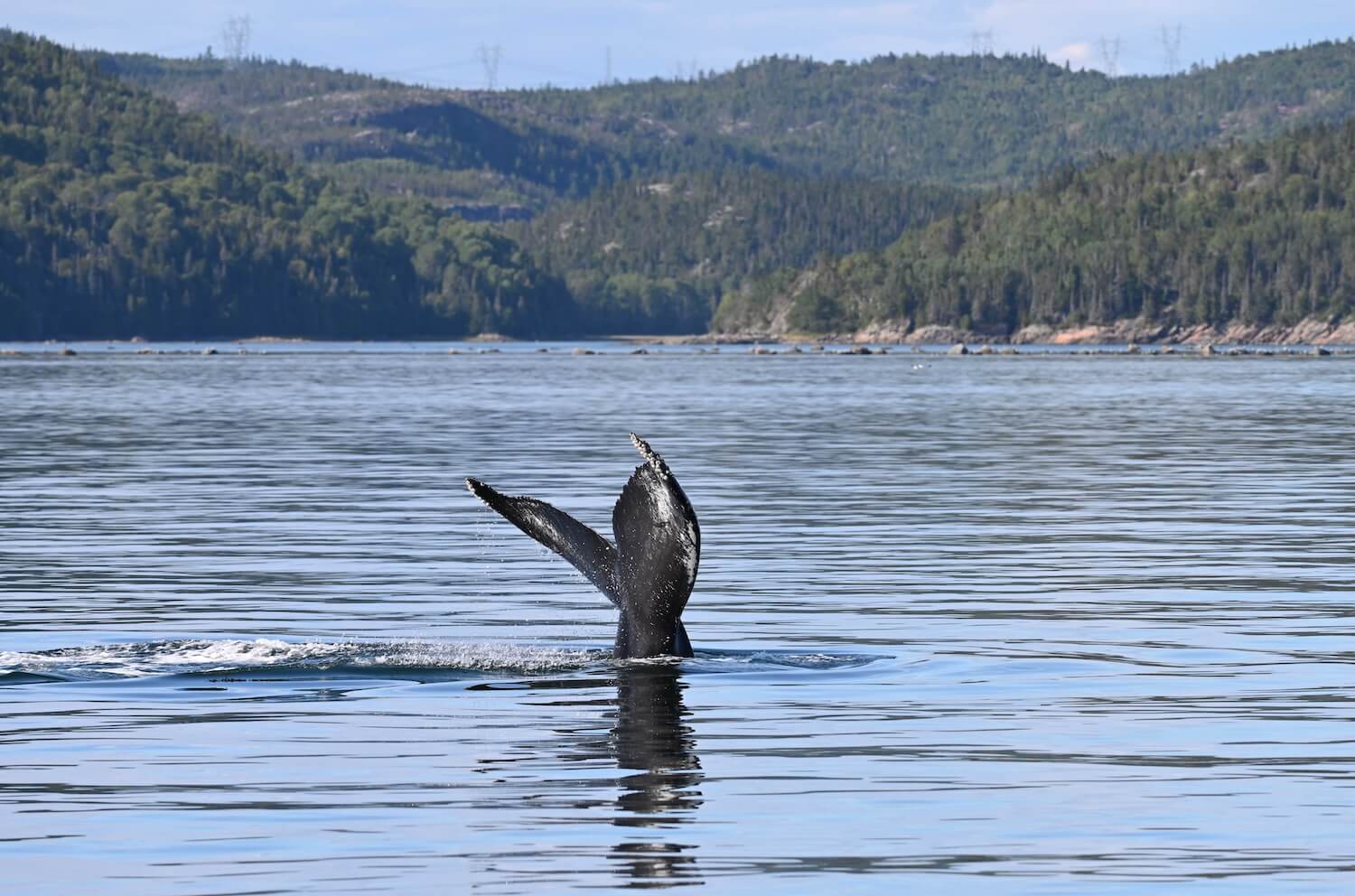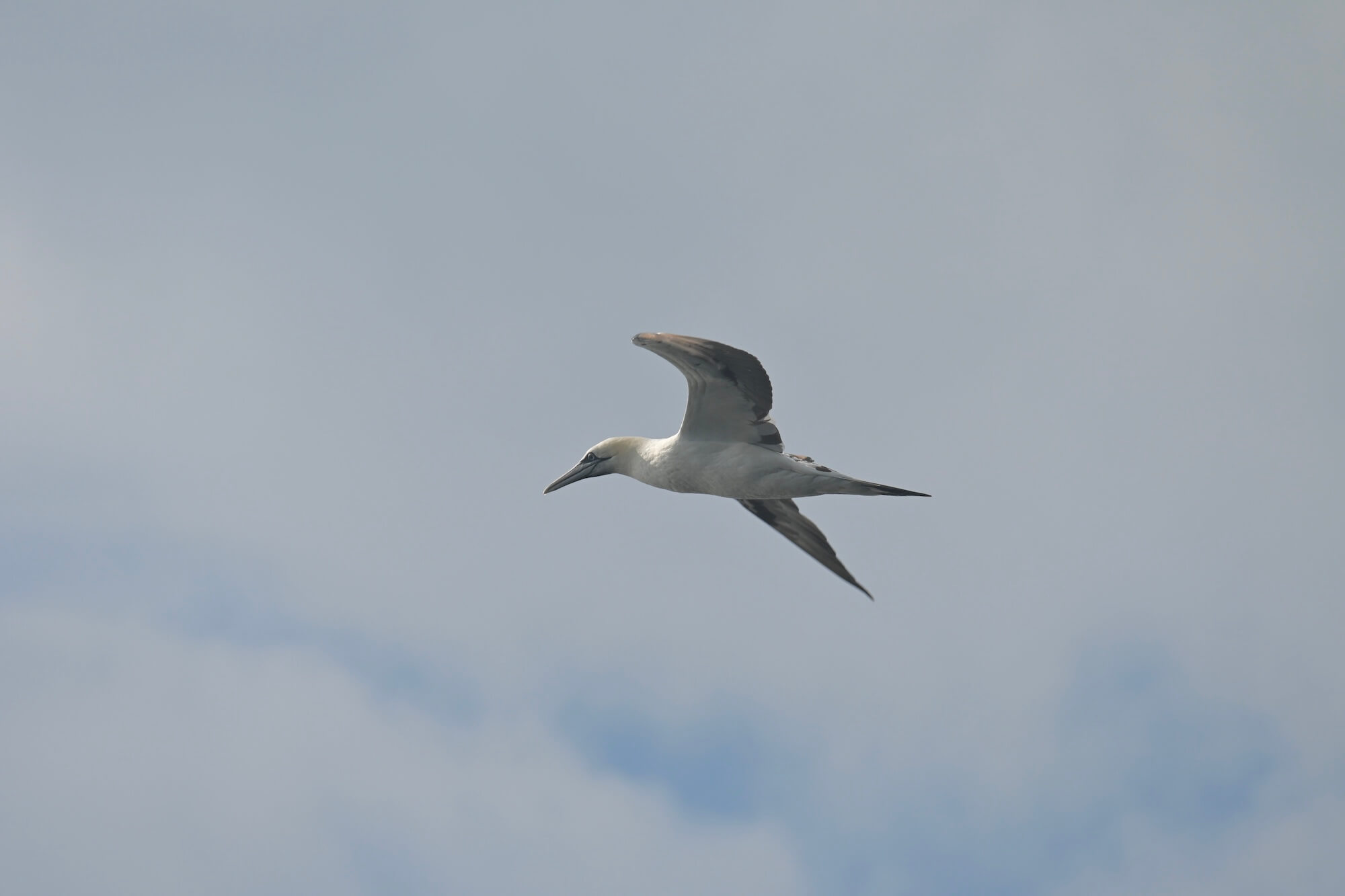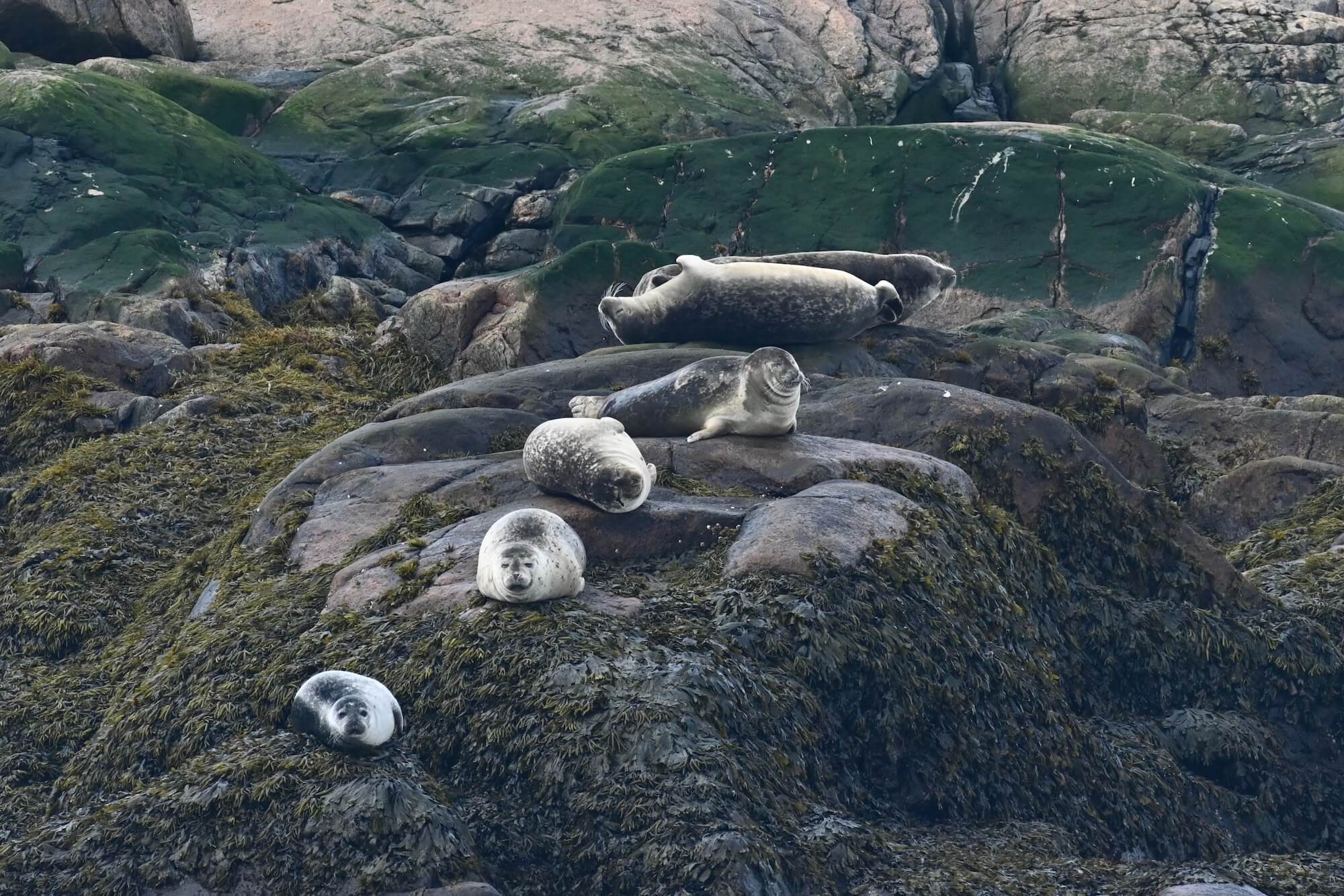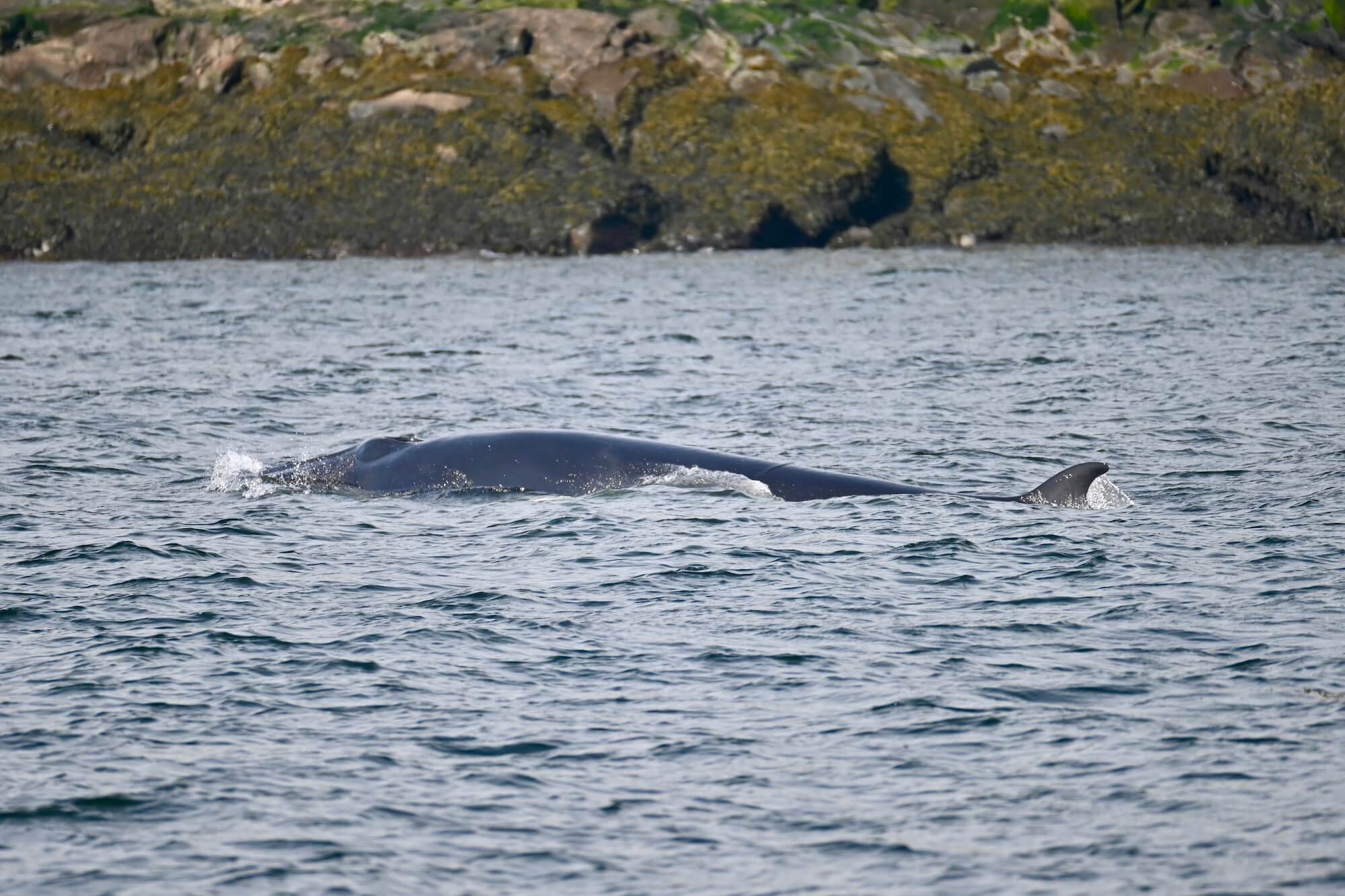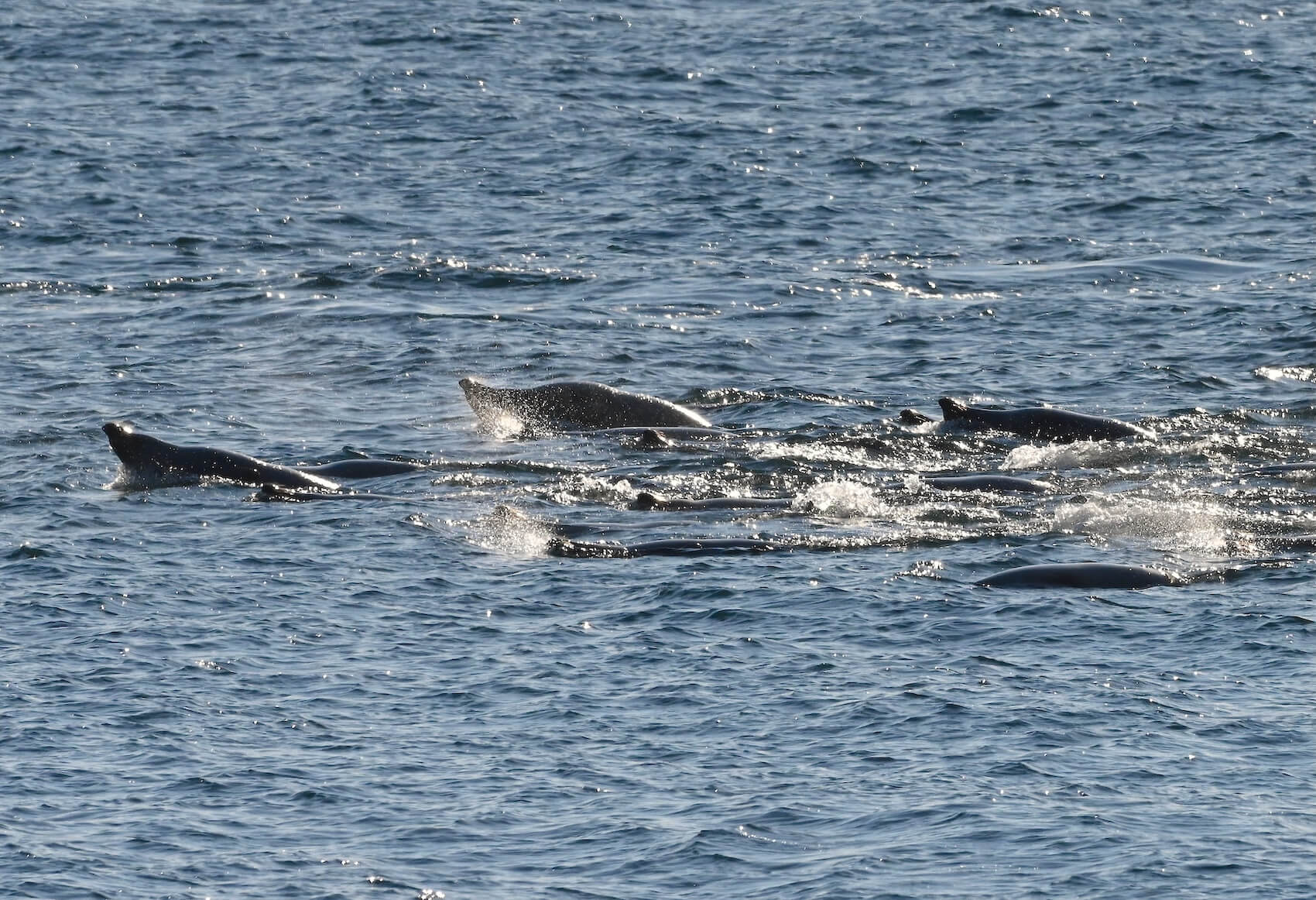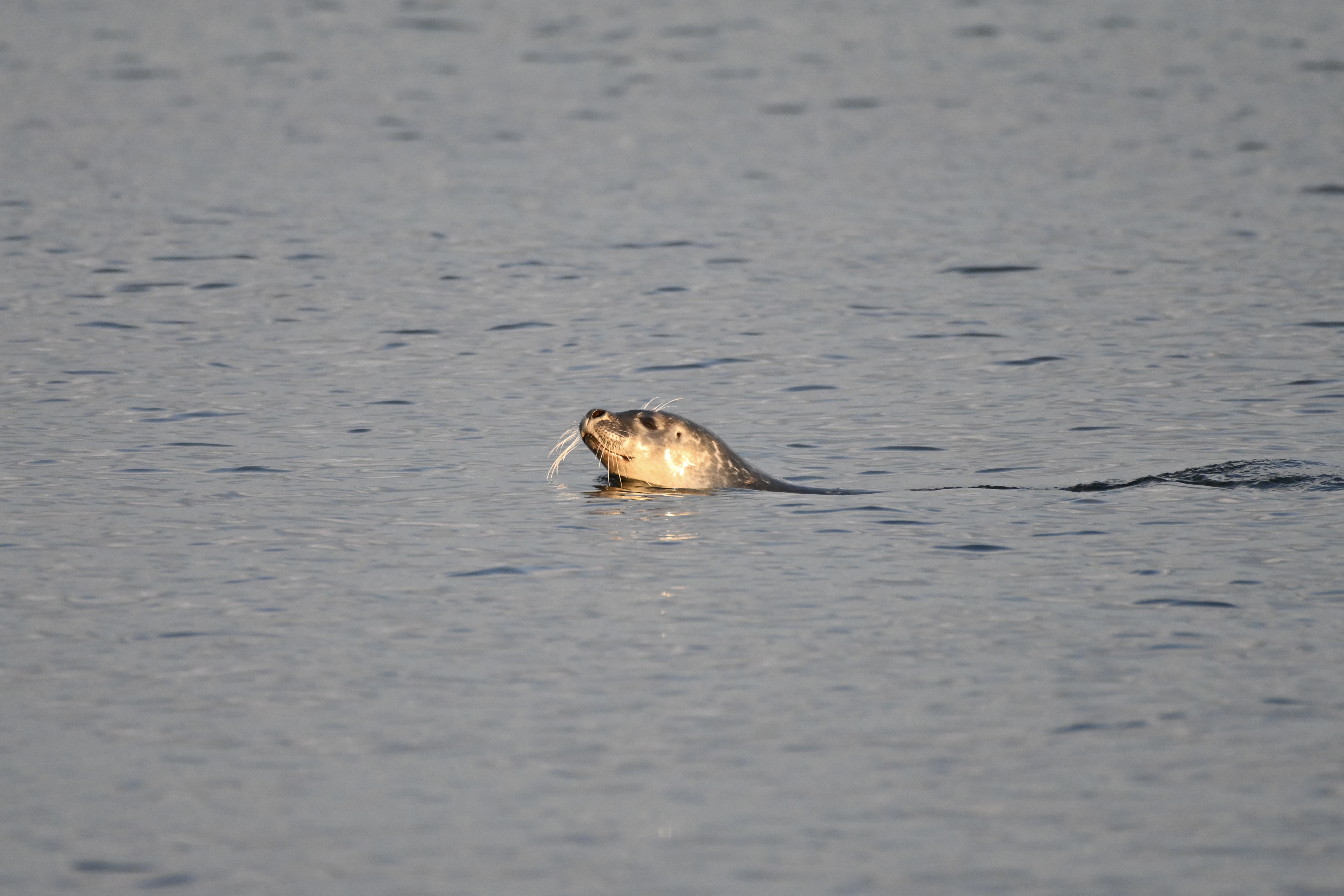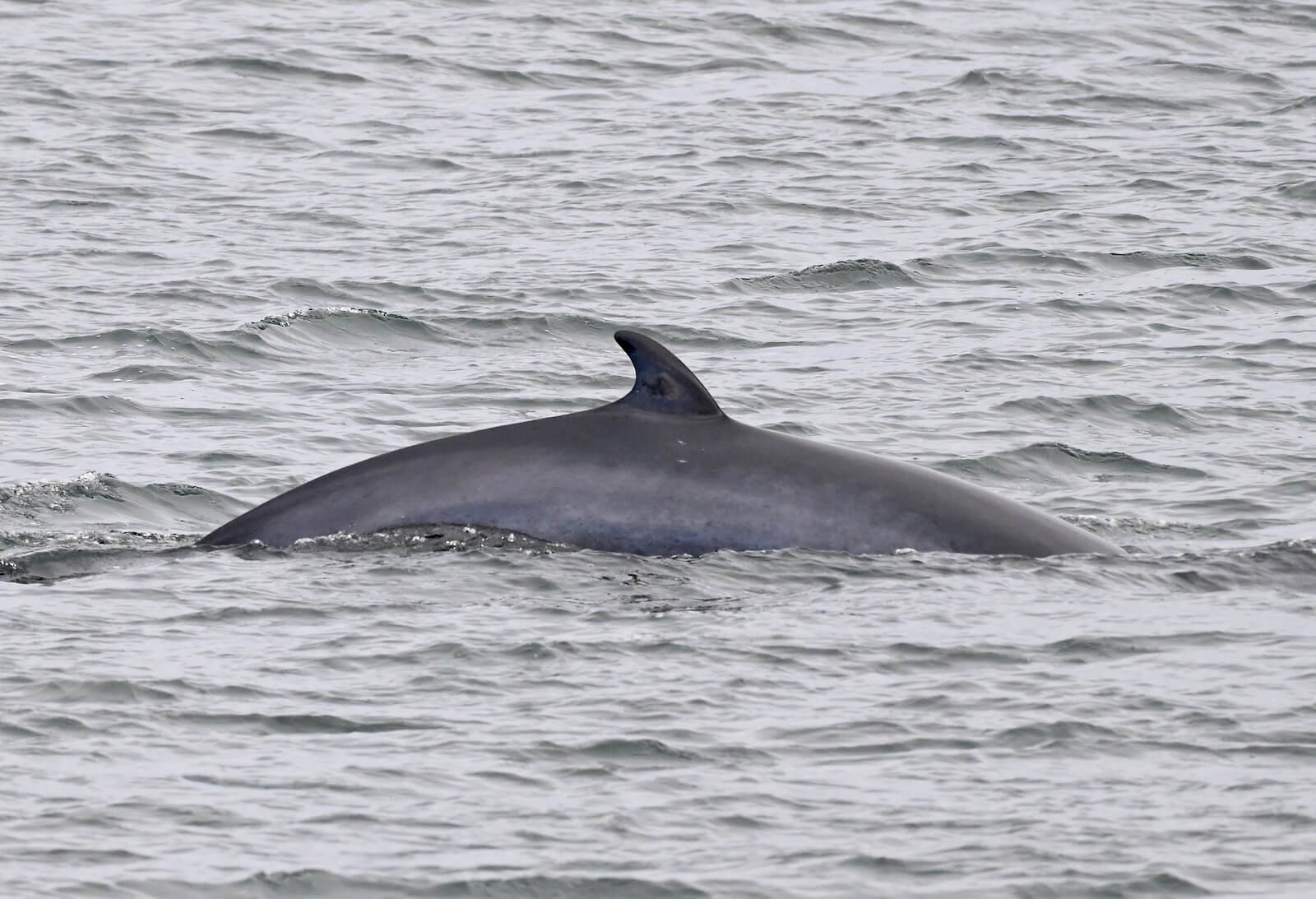From breaching whales to a beluga incursion in the Gaspé Peninsula and the presence of twenty or so humpbacks near Blanc-Sablon, there was no shortage of observations and wonderful stories this week!
Breaches
The atmosphere was rather calm on the water on August 22. Two humpback whales – H859 (a.k.a. Yvon) and H943 – were seen logging, meaning they were floating on the surface like a log. This behaviour, which is a form of rest for whales, supposedly lasted several hours. Unlike for humans, breathing in marine mammals is voluntary, meaning these animals must consciously “think” about breathing. Few studies have ever been conducted on sleep in large cetaceans, but we can imagine that these two large rorquals were taking a well-deserved nap!
Might this rest have allowed Yvon to breach a few days later?
On August 26, this individual’s energy levels seemed to be at their peak. Over the course of an hour, it reportedly performed “at least 35 breaches as well as countless pectoral slaps and numerous tail slaps on the water,” excitedly shares one wildlife photographer and naturalist. “Moments like this are rare,” he adds, “no more than a handful in a full season, even if you’re on the water on a near daily basis.” A few minke whales were also seen breaching, from Tadoussac to Labrador! Mériscope’s research team encountered seven individuals near Les Bergeronnes over the course of the week.
While these acrobatics are certainly impressive, their origins are more mysterious. Play, seduction during reproduction, communication between individuals… many hypotheses exist to explain the purpose of breaches. It is also possible that whales adopt this behaviour to rid themselves of the parasites that cover their skin.
“Glittery breaths under the golden light”
A marine mammal enthusiast is lost for words when describing a memorable evening in Baie Sainte-Marguerite. Her story captures all the magic of summer sunsets.
“We had stopped to watch the setting sun, and there were belugas everywhere. They were super active and diving all around amidst the glittery reflections of the golden sun on the water. Sometimes they were in small clusters, other times they congregated in large herds, where they were practically swimming one on top of another!” Out of nowhere, we saw what appeared to be a juvenile perform a series of breaches! It extended the entire front of its body except for its peduncle into the air before falling back into the water with an enormous splash. It was absolutely crazy. We also observed belugas spyhopping, poking their large melons out of the water and in many cases their tail fins as well. One of them performed a headstand, extending its peduncle and caudal fin perpendicular to the water surface! Our belugas were real gymnasts that evening! A little later, we also heard all sorts of vocalizations. A magical evening with a light breeze and the fjord as a backdrop.”
What more could one ask for?
Blue and white in Gaspé
In Gaspé Bay, two humpbacks, harbour porpoises, and minke whales have been recorded. There were also reports of two blue whales and as many fin whales, as well as good numbers of grey and harbour seals. What struck one naturalist most, however, was the presence of dolphins: “Observing dolphins is always incredible: jumps, spins, backflips, tail slaps… They are such ridiculous acrobats.”
One resident enjoyed quite a surprise when admiring the view from Cap Bon-Ami: “We started seeing white spots, but there was no wind. Upon closer inspection, there were about a hundred belugas scattered in small groups. It was a beautiful sight and so exceptional to see this in the Gaspé region.” Several beluga sightings have been reported in the region since the start of the season.
From gannets to humpbacks
For one cetacean enthusiast, the animal that stood out this week in the Saguenay–St. Lawrence Marine Park wasn’t a mammal… “Despite the incredible sightings of humpbacks, the animal that caught my attention most in recent days has been the northern gannet,” he reports. “They’re amazing to watch when they dive, especially when there are several of them. We would often see harbour porpoises swimming amongst the diving gannets. For a very brief moment, I was lucky enough to see a porpoise perform a full breach in the middle of all the action.”
Near Franquelin, what caught my attention was the presence of large numbers of grey seals and three humpback whales. Not far from Sept-Îles, CERSI chalked up a multitude of species: “minke whales, porpoises, white-sided dolphins, two humpbacks, four fin whales, and five blues.”
Aboard the Bella-Desgagné, a marine mammal observer and interpreter-guide from the Marine Mammal Observation Network (MMON) shared a memorable encounter that he enjoyed on August 22 near Blanc-Sablon. “Together with the passengers on board, we were able to observe at least five different groups of four individuals, for a total of about twenty humpbacks! Never before have I had the chance to observe so many at the mouth of the Strait of Belle-Isle.” The individuals displayed a wide range of behaviours, including resting and diving. One group swimming near the surface even appeared to be feeding!
Where are the whales this week? Observation map
These data were reported by our network of observers. They give an idea of the presence of whales and in no way represent the actual distribution of whales in the St. Lawrence. Just for fun!
Click on the whale or seal icons to discover the species, the number of individuals, additional information or photos of the sighting. To enlarge the map, click on the icon in the top right-hand corner. The map works well on Chrome and Firefox, but not so well on Safari.
To display the list of sightings, click on the icon in the top left-hand corner.
Thanks to all our collaborators!
Special thanks go out to all our observers who share their love for marine mammals with us! Your encounters with cetaceans and pinnipeds are always a pleasure to read and discover.
On the water or from shore, it is your eyes that give life to this column.
Odélie Brouillette
Rachel Bien-Lavergne
Thalia Cohen Bacry
Marie-Andrée Charlebois
Laetitia Desbordes
Bernard Durocher
Hélène Guitton
Stéphanie Houde
Sidric Jasmin
Jade-Audrey Lavergne
Sandrine Papias
Pascal Pitre
Renaud Pintiaux
Diane Ostiguy
Laurence Tremblay
Guillaume Savard
Guy Synnott
Marielle Vanasse
And to all the others!
Additionally, we would like to acknowledge the following teams that also share their sightings:
Sept-Îles Research and Education Centre (CERSI)
Group for Research and Education on Marine Mammals (GREMM)
Marine Mammal Observation Network (MMON)
Quebec Marine Mammal Emergency Response Network (QMMERN)
Mingan Island Cetacean Study (MICS)
Mériscope
Would you also like to share your observations?
Have you seen any marine mammals in the St. Lawrence? Whether it’s a spout offshore or just a couple of seals, drop us a line and send your photos to [email protected]!


